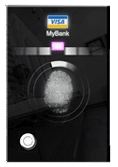Europe’s RFID market poised to grow
23 May, 2007
category: RFID
Frost & Sullivan analyzed European Radio Frequency Identification (RFID) Middleware Markets and found that the markets earned revenues of $41.0 million in 2006 and estimates this to reach $181.8 million in 2013. The European RFID market is set to achieve significant progress, given its past and existing initiatives in retail, healthcare, manufacturing, logistics and anti-counterfeiting measures. While this market has not demonstrated growth to the same extent as the RFID market in the United States, it is nevertheless poised for growth. There is a strong case for RFID in places where the unit cost is high and also in places where inventory loss is widespread. Likely growth segments for RFID middleware will be in the areas of drug manufacturing and tracking, medical equipment tracking in hospitals and asset tracking.
Rising Data Volumes Create Need for RFID in Europe
New analysis from Frost & Sullivan, European Radio Frequency Identification (RFID) Middleware Markets, finds that the markets earned revenues of $41.0 million in 2006 and estimates this to reach $181.8 million in 2013.
London, United Kingdom, 05/23/2007–The European radio frequency identification (RFID) market is set to achieve significant progress, given its past and existing initiatives in retail, healthcare, manufacturing, logistics and anti-counterfeiting measures as well as the increasing investments in this space. While this market has not demonstrated growth to the same extent as the RFID market in the United States, it is nevertheless poised for growth.
New analysis from Frost & Sullivan (autoid.frost.com), European Radio Frequency Identification (RFID) Middleware Markets, finds that the markets earned revenues of $41.0 million in 2006 and estimates this to reach $181.8 million in 2013.
If you are interested in a virtual brochure, which provides manufacturers, end users, and other industry participants with an overview of the latest analysis of the European RFID Middleware Markets, send an email to Joanna Lewandowska, Corporate Communications, at [email protected] with your full name, company name, title, telephone number, email address, city, state, and country. We will send you the information by email upon receipt of the above information.
There is a strong case for RFID in places where the unit cost is high and also in places where inventory loss is widespread. Likely growth segments for RFID middleware will be in the areas of drug manufacturing and tracking, medical equipment tracking in hospitals and asset tracking.
“The RFID technology has enormous potential and will exhibit strong growth in the European region,” remarks Frost & Sullivan Research Analyst Rengarajan Srinivasan. “The increased use of the technology at the case- and item-tagging level is expected to generate increased quantities of data creating an increased need for middleware to reduce data congestion.”
At present, the majority of end users are implementing RFID solutions at the case, pallet or carton level. However, as this technology is gradually deployed across various levels in vertical segments such as pharmaceuticals, the volume of data to be handled will rise. As a result, enterprise applications will require a middleware capable of handling the enormous level of data throughput.
Increased adoption or RFID will depend on the sophistication provided by the middleware, which can be embedded in the readers or form part of an enterprise solution. The success of RFID in open loop systems will also clearly depend on the data-handling capabilities provided by the middleware.
However, several issues which will present significant challenges for the European RFID middleware market remain. Some of the immediate challenges include meeting regulatory requirements such as ‘Listen Before Talk’ (LBT), which are unique to Europe. In addition, to the Europe wide issues, certain countries such as France have dedicated frequencies in the UHF band for military and defence, which clash with RFID frequencies.
Therefore, creating a networked environment covering all participants and forming multiple business process flows operating simultaneously at every level will require meticulous detailing during integration. “The success of the RFID technology depends on the effective integration of all data, creating meaningful business intelligence for the enterprise systems,” explains Srinivasan. “The move towards a demand-oriented supply chain and lean manufacturing necessitates stringent and accurate data control techniques.”
As the technology matures, collaboration between vendors is likely to increase, since end users expect a uniform, seamless solution between the devices and the enterprise application software. This means partnerships between device management solution providers and enterprise application software providers will prove beneficial to both parties.
European Radio Frequency Identification (RFID) Middleware Markets is part of the Automatic Identification & Security Growth Partnership Service, which also includes research on RFID printing solutions, RFID in manufacturing and RFID tags. All research included in subscriptions provide detailed market opportunities and industry trends that have been evaluated following extensive interviews with market participants. Interviews with the press are available.
About Frost & Sullivan
Frost & Sullivan, a global growth consulting company, has been partnering with clients to support the development of innovative strategies for more than 40 years. The company’s industry expertise integrates growth consulting, growth partnership services, and corporate management training to identify and develop opportunities. Frost & Sullivan serves an extensive clientele that includes Global 1000 companies, emerging companies, and the investment community by providing comprehensive industry coverage that reflects a unique global perspective and combines ongoing analysis of markets, technologies, econometrics, and demographics.


